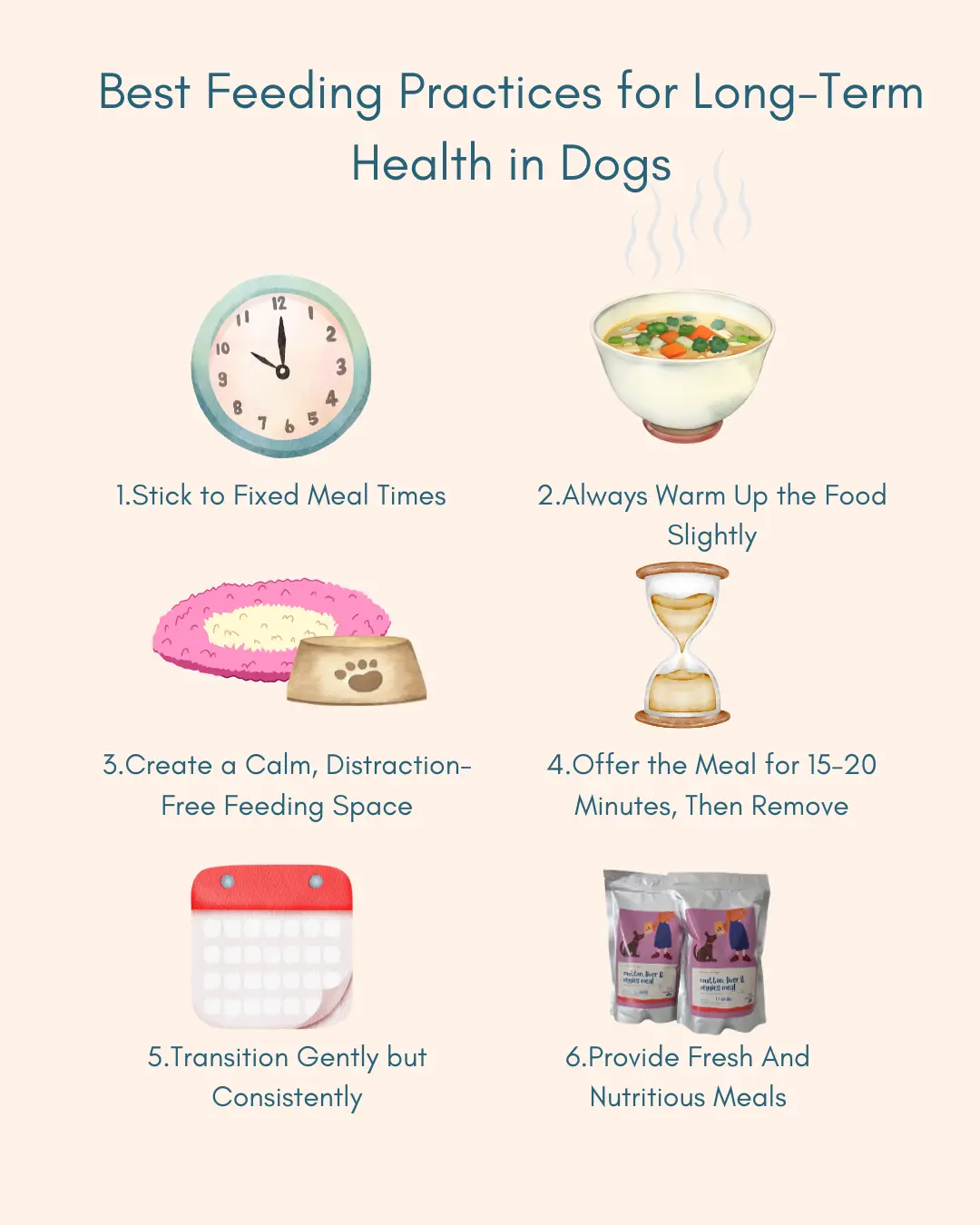Have you ever noticed how your dog knows when it’s mealtime before you even glance at the clock? Or how they wait in the same spot, at the same time, day after day? That’s no coincidence. Dogs, just like us, are deeply routine-driven — and when it comes to their diet, structure isn’t just comforting, it’s crucial for their well-being.
In this blog, we explore why dogs thrive on routine, how inconsistency can affect their health, and what you can do to establish healthy, lifelong eating habits.
1. Dogs Thrive on Predictability
Dogs are creatures of habit. Their internal biological clocks (called circadian rhythms) are highly sensitive to routine, especially around food. When meals are served consistently — in the same place, at the same time, in the same format — your dog feels safe, secure, and ready to eat.
Just like you might crave your morning coffee, your dog’s body starts preparing for digestion when it knows food is coming. Saliva production increases, enzymes get activated, and their metabolism wakes up — all because of routine.
2. Sudden Changes Can Lead to Food Aversion
Have you ever served your dog their usual food cold one day and noticed they sniffed it, looked confused, then walked away?
Even minor disruptions in temperature, texture, or smell can trigger food rejection. Dogs associate food with memory — if something smells or tastes different, they may avoid it out of caution or confusion.
Worse, if they’ve ever felt ill after eating, they can associate that discomfort with the food's new format, even if the recipe hasn’t changed. Over time, this can evolve into pickiness or chronic meal refusal.
3. Inconsistent Feeding Reduces Nutrient Intake
Dogs need balanced nutrition every day to maintain energy, immunity, and organ function. When fussy eating becomes frequent — skipping meals or nibbling here and there — your dog is likely missing key vitamins and minerals, especially if they’re on a therapeutic or vet-prescribed diet.
Over time, this can lead to:
- Lower immunity
- Poor skin and coat quality
- Digestive issues
- Weak joints or bones
Puppies and senior dogs are particularly vulnerable — their nutrient needs are higher and more specific.
4. Long-Term Pickiness Can Become Chronic
If we keep indulging picky behavior (offering treats, changing meals daily, feeding on demand), dogs quickly learn that refusing food = better options coming.
This habit is hard to break and becomes especially difficult when your dog needs to eat a specific diet for medical reasons. Suddenly, a picky eater has no flexibility, and even therapeutic food is rejected.
The best way to prevent this? Start with structure early, and don’t reward fussiness.
5. Poor Feeding Habits = Higher Risk of Chronic Disease
Dogs need regular, balanced meals to stay healthy. Poor feeding routines — irregular timing, inconsistent food quality, or free feeding — can contribute to long-term issues like:
- Obesity (due to grazing)
- Pancreatitis (from irregular fat intake)
- Renal disease (from excess salts or imbalanced hydration)
- Joint problems (due to fluctuating weight)
This is especially true for growing puppies, large breeds, and senior dogs.
🥣 Best Feeding Practices for Long-Term Health in Dogs

✅1. Stick to Fixed Meal Times
Feed your dog at the same time every day. This builds a stable appetite rhythm, supports digestion, and reduces food anxiety.
✅ 2. Always Warm Up the Food Slightly
Warm (not hot) food enhances aroma and flavor. Cold food can be off-putting and harder to digest.
✅ 3. Create a Calm, Distraction-Free Feeding Space
Avoid TV noise, guests, or loud children at mealtime. Let your dog eat in peace in a familiar spot.
✅ 4. Offer the Meal for 15–20 Minutes, Then Remove
This teaches your dog that food won’t always be available, encouraging timely eating.
✅ 5. Transition Gently but Consistently
If your dog is used to grazing or cold food, introduce structure slowly — but stay consistent.
Q&A: Why Feeding Routine Matters
Q: My dog skips meals sometimes. Should I be worried?
Occasional meal skipping is normal, especially in hot weather or if there are distractions. But frequent skipping, especially if paired with lethargy, picky behavior, or weight loss, should be addressed.
Q: Can a picky eater become normal again?
Yes! But it requires patience, routine, and no bribes. Dogs adapt to structure quickly — within a few days, they often stop resisting and start enjoying their meals again.
Q: Is it bad to feed treats between meals?
Frequent treats can reduce appetite during mealtime. Keep treats limited to training or low-calorie snacks, and ensure they don’t interfere with meal interest.
Why This Matters: Habit Shapes Health
Dogs are emotional, sensory-driven animals. Consistency in feeding not only supports their physical health, but also their emotional well-being.
Without predictable meals, dogs can become anxious, irritable, or overly food-driven.
With routine, they:
- Eat better
- Digest better
- Feel safer
- Stay healthier
🌟 Why Momo\&Co Supports Healthy Habits
At Momo&Co. , we believe every dog deserves not just good food — but good feeding practices.
That’s why our fresh dog food subscriptions in are designed for structure and balance:
- Delivered on schedule, so your dog gets their meals on time
- Made with fresh, real ingredients, free from preservatives or additives
- Portioned and customized based on your dog’s age, weight, and activity
- Created with guidance from pet nutritionists
We make it easier for pet parents to build healthy feeding habits — without the guesswork.
Final Thoughts: Habits Build Health
Feeding your dog isn’t just about what's in the bowl — it’s how, when, and why you feed that matters just as much.
By embracing structure, consistency, and thoughtfully prepared fresh meals, you're giving your dog more than just nutrition — you're giving them comfort, security, and long-term health.
🐾 Ready to make feeding time better?
Join the Momo&Co. family today — and build a better habit, one healthy bowl at a time.